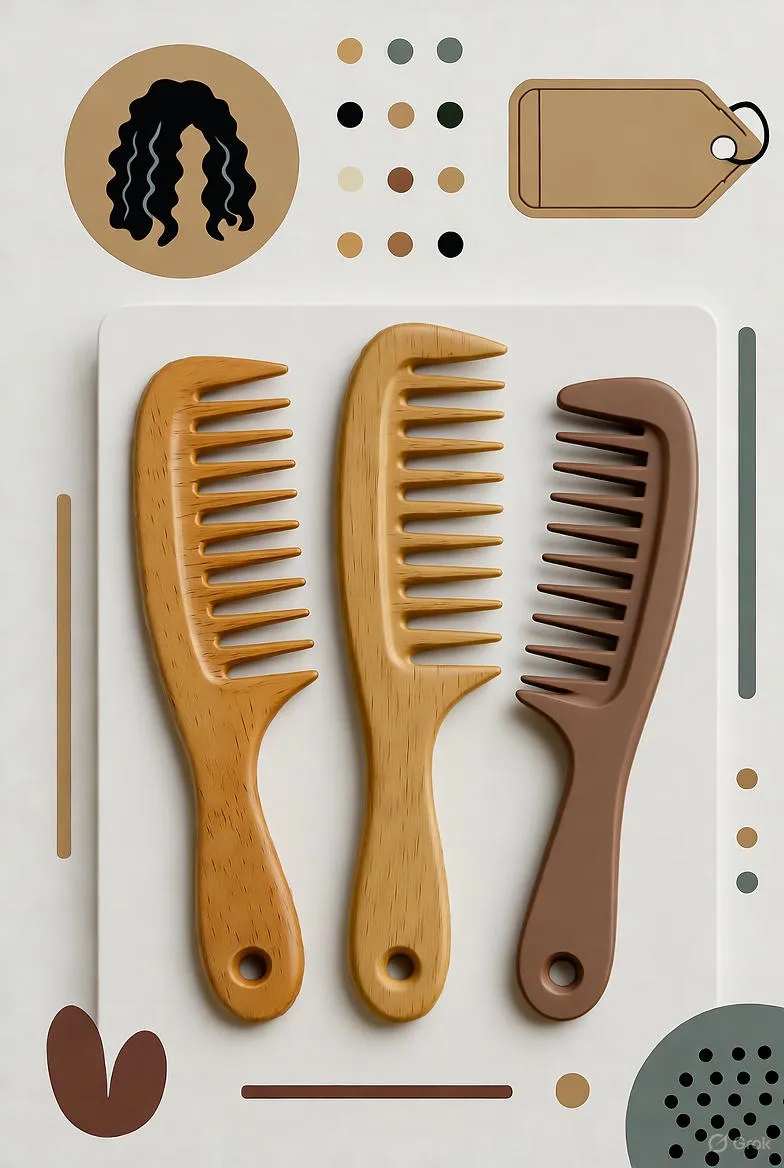How to Repair Damaged Curls: A Complete Guide to Reviving Your Natural Hair
Learn how to repair damaged curls with expert tips on deep conditioning, moisture balance, and natural treatments. Restore your curl definition, shine, and strength.

Curly hair is beautiful, versatile, and full of life—but it can also be fragile and prone to damage. Heat styling, chemical treatments, harsh brushing, and even environmental factors can cause curls to lose their bounce and become dry, frizzy, or lifeless. The good news is that with the right care routine and some patience, you can restore your curls to their natural health and vibrancy.
Understanding Curl Damage
Before diving into repair strategies, it’s essential to understand what causes curl damage. Curly hair is naturally more porous and delicate than straight hair. This means it can easily lose moisture and is more susceptible to breakage. Common causes of curl damage include:
- Excessive heat styling – using straighteners, curling irons, or blow dryers without protection.
- Chemical treatments – coloring, relaxing, or perming your hair can break down the curl pattern.
- Improper detangling – brushing dry curls aggressively can lead to breakage.
- Lack of moisture – curls thrive on hydration, and dryness leads to frizz and brittleness.
- Environmental stress – UV rays, wind, and pollution can weaken the hair shaft over time.
Step-by-Step Routine to Repair Damaged Curls
Restoring your curls requires consistent care and the right techniques. Follow these steps to help your hair recover and thrive again.
1. Clarify and Detox Your Hair
Start by removing product buildup and impurities. Use a gentle clarifying shampoo or a natural remedy like apple cider vinegar diluted with water. This step cleans the scalp and allows moisture and nutrients to penetrate more effectively.
2. Deep Condition Regularly
Deep conditioning is non-negotiable for curly hair repair. Choose a mask rich in proteins, natural oils, and humectants such as shea butter, argan oil, honey, and aloe vera. Apply it once or twice a week, leave it on for at least 20 minutes, and use heat (like a warm towel or shower cap) to enhance absorption.
3. Trim Split Ends
Even with the best care routine, damaged ends won’t heal. Trimming every 8–12 weeks prevents breakage from spreading up the hair shaft and keeps curls looking fresh and defined.
4. Switch to Sulfate-Free and Silicone-Free Products
Harsh detergents strip your hair of its natural oils. Opt for shampoos and conditioners that are sulfate-free, and avoid silicones that can create buildup and block moisture. Look for gentle cleansers formulated specifically for curly or textured hair.
5. Incorporate Protein Treatments
If your curls feel mushy or overly soft, they might be suffering from a lack of protein. Use a protein-rich treatment every few weeks to strengthen the hair structure. Ingredients like keratin, silk amino acids, or hydrolyzed wheat protein can help restore elasticity.
6. Moisturize and Seal
Curly hair needs a balance of moisture and protein. After conditioning, use a leave-in conditioner to lock in hydration. Then seal it with a natural oil like jojoba, coconut, or olive oil to prevent moisture loss. The LOC method (Leave-in, Oil, Cream) works exceptionally well for most curl types.
7. Minimize Heat Styling
Give your curls a break from heat. If you must use heat tools, always apply a heat protectant and keep the temperature low. Try diffusing on cool or low heat settings to preserve your curl pattern.
8. Sleep with Care
Protect your curls while you sleep by using a silk or satin pillowcase or wrapping your hair in a bonnet or scarf. This reduces friction, preventing tangles and breakage. You can also try the ‘pineapple’ method—loosely tying your curls on top of your head to maintain their shape overnight.
9. Hydrate from Within
Healthy hair starts with a healthy body. Drink plenty of water, eat foods rich in vitamins A, C, E, biotin, and omega-3 fatty acids. Proper nutrition ensures your hair receives the nutrients needed to grow strong and resilient.
Bonus: DIY Masks for Damaged Curls
Homemade masks can be a powerful, natural way to restore life to your curls. Here are a few easy recipes:
- Avocado & Honey Mask: Mash one ripe avocado and mix it with two tablespoons of honey and a tablespoon of olive oil. Apply to damp hair for 30 minutes before rinsing.
- Banana & Coconut Oil Mask: Blend one banana with two tablespoons of coconut oil. Smooth it through your hair, leave for 20–30 minutes, then rinse thoroughly.
- Yogurt & Aloe Vera Mask: Combine half a cup of yogurt with two tablespoons of aloe vera gel. Leave it on for 25 minutes for deep hydration.
Signs That Your Curls Are Healing
Repairing damaged curls takes time and consistency. Here’s how you’ll know your efforts are working:
- Your curls regain definition and bounce.
- Reduced frizz and dryness.
- Softer texture and easier detangling.
- Less breakage and split ends.
- Improved shine and overall manageability.
Long-Term Curl Care Tips
Once your curls begin to recover, maintain them with healthy habits:
- Stick to a consistent moisture-protein balance.
- Avoid over-washing—two to three times a week is often enough.
- Use a microfiber towel or cotton T-shirt to dry your hair gently.
- Detangle using your fingers or a wide-tooth comb only when hair is wet and conditioned.
- Protect your curls from the sun and chlorine with a leave-in conditioner or hat.
Conclusion
Repairing damaged curls isn’t an overnight process, but with dedication and the right care routine, you can restore your hair’s health, strength, and natural beauty. Nourish your curls from the inside out, embrace gentle practices, and remember that patience is key. Every small step brings you closer to your best curls yet—shiny, defined, and full of life.


